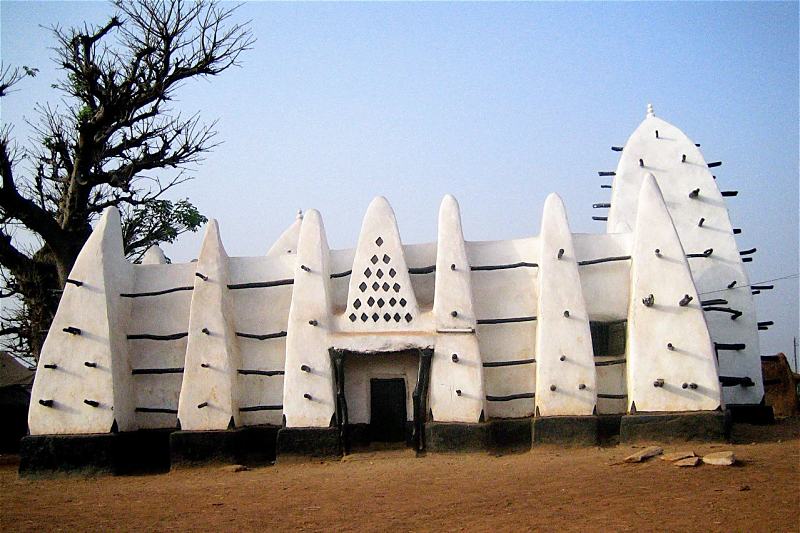At its zenith in the eighteenth century, the Asante Kingdom was one of the richest and most powerful states on the African continent. Today, architectural traces of historic structures are evident in ten traditional building complexes at Kumasi in central Ghana—powerful landmarks that continue to express the spiritual life of their Akan citizenry. In this thoughtfully crafted documentary, witness the festival of Akwasidae at one of the few remaining complexes, and meet the caretakers who are reviving historical craftsmanship techniques to rebuild and preserve these “homes of men and gods.”
Ghana’s architectural legacy holds many treasures, but few are as culturally rich and visually striking as the Asante Traditional Buildings. Located in the Ashanti Region of Ghana, these structures are the last surviving examples of the once widespread traditional architecture of the Ashanti Empire, which reached its height in the 18th and 19th centuries. Today, they offer a powerful window into the spiritual and historical fabric of the Asante people, preserving a style of design that fuses symbolism, culture, and community values.
Designated as a UNESCO World Heritage Site in 1980, the Asante Traditional Buildings are admired not only for their unique earthen architecture but also for their intricate geometric reliefs and spiritual significance. Built with natural materials like mud, timber, and thatch, these buildings were originally constructed as shrines and palaces under the Asante Kingdom, which once ruled much of present-day Ghana. They serve both religious and functional purposes, making them one of the most authentic expressions of West African vernacular architecture still in existence.

In today’s world of rapid urbanization and concrete high-rises, the survival of the Asante buildings is nothing short of remarkable. What sets these structures apart is their symbolic representation of Asante cosmology. The walls are adorned with sacred motifs and Adinkra symbols—each carrying deep meanings about morality, spirituality, and social values. The use of natural color pigments extracted from clay and charcoal adds not only aesthetic beauty but also layers of storytelling embedded in design.
Related article - Uphorial Sweatshirt
Despite their historical significance, these buildings face ongoing threats from climate change, erosion, and modernization. The wet tropical climate of Ghana can be unforgiving to earth-based construction, and unless regularly maintained, these structures deteriorate rapidly. Fortunately, new conservation efforts—backed by local communities, UNESCO, and international partners—are helping to restore and preserve these cultural treasures. Workshops are training artisans in ancient building techniques to ensure that generational knowledge is not lost but passed on.

The Met
One recent breakthrough came in early 2025 when the Ghana Museums and Monuments Board launched a digital documentation project that uses 3D laser scanning to record and preserve the Asante buildings virtually. This not only aids in restoration but also allows for global access and educational outreach, helping to promote cultural tourism and spark international appreciation.
Interestingly, the Asante Traditional Buildings are becoming more than relics of the past. There’s a renewed interest among young Ghanaian architects and designers who are incorporating traditional Asante motifs into modern construction. This fusion of old and new is giving rise to a cultural revival, reflecting pride in African identity and heritage. Today, several cultural festivals and guided tours are organized around these heritage sites, attracting both local and international visitors who seek immersive experiences.
Moreover, the influence of the Asante architectural style is now being studied as a sustainable building model. Earthen architecture offers natural cooling, reduces the carbon footprint, and uses locally sourced materials—key features that align with global sustainable development goals. The resilience of these structures, built without modern technology, continues to impress architects and conservationists worldwide.
Asante Traditional Buildings are not just historical landmarks—they are living monuments. They house ancestral spirits, serve as places of worship, and continue to play a role in community decision-making. Preserving them is not only about maintaining physical structures but about safeguarding identity, wisdom, and indigenous knowledge.
In a rapidly changing world, Ghana’s Asante buildings remind us that tradition and progress can coexist. With continued support and cultural pride, these earthy masterpieces will inspire generations to come.



